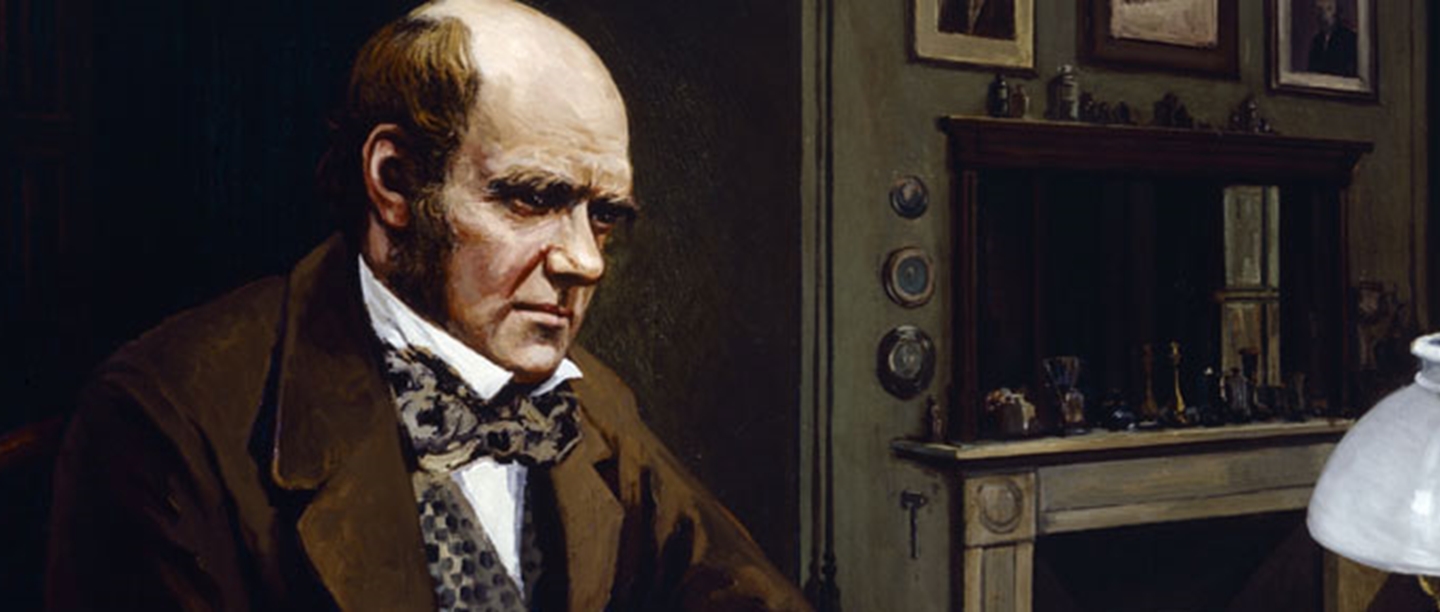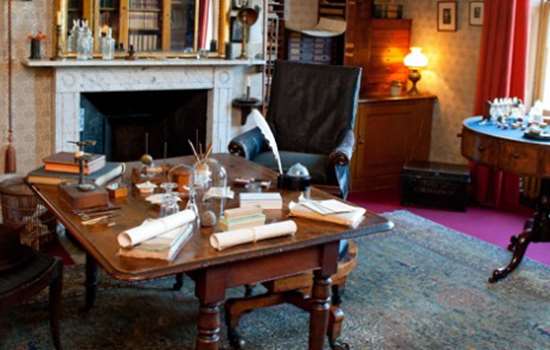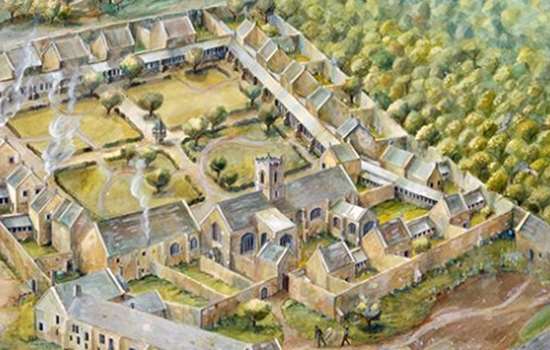
From playing music to earthworms to wandering up and down his own ‘thinking path’, Charles Darwin found plenty of inspiration for his theories at Down House in Kent, where he lived with his family for forty years.
James Costa has gone one step further with his new book Darwin’s Backyard: How Small Experiments Led to a Big Theory. James spent time at Down House when researching his book and discovered some fresh insights into the ways that Darwin transformed his home into a living laboratory.
We caught up with James to find out more.
James Costa, Darwin expert and entomologist.
Why did you decide to write Darwin’s Backyard?
My previous book, The Annotated Origin, delved into the details of Darwin’s experiments. I realised then that there was an interesting story to be told about how the experiments opened a window into Darwin’s home life and working methods. I also discovered a version of Darwin that felt very much at odds with the all-too-common conception of him as melancholy, even tormented. His rich family and experimental life revealed him as a husband, dad, uncle, friend, and correspondent; a very human and sometimes impish man with a sense of humor as well as a deep curiosity about the natural world.
Before writing the book, how well did you know Down House and its gardens?
I didn’t know the site well at all, other than having read about it. But when I first visited in 2005, I was delighted with the extent of the restoration inside and out. The recreations of the house feature reassembled family heirlooms while his gardens and greenhouse are home to the various plants he loved and studied such as orchids, carnivorous plants, primroses, climbing plants.
I was delighted, too, to see how several experiments are recreated: the weed garden, lawn plot and the playful recreation of the Darwin’s famous experiment where he played music to earthworms in the drawing room.
Darwin’s weed garden experiment at Down House.
How did Down House inspire Darwin?
Down House and its gardens were perfect for Darwin. They’re so tranquil and rural – the area teems with nature. He studied virtually all areas of the property – the gardens of course, but also wooded copses, hedgerows, meadows; even the lawns became a study area. Darwin would routinely extrapolate these ‘backyard’ findings to the world at large in all sorts of experiments. Down House’s grounds and surrounding area became collectively a sort of living laboratory for him.
Some areas were inspiring in other ways too, like his gravel ‘thinking path’, the Sandwalk. Darwin walked around it just about daily, no doubt observing nature around him, thinking over puzzles and problems and devising experiments. As someone who runs a modern biological field station, I see Down House as Darwin’s field station of sorts; a centre of myriad investigations and experiments, with Darwin as head of the lab and his family and friends his eager field and lab hands.
The glasshouse erected by Darwin in the garden at Down House, restored and now preserved as it was in his time.
What significant discoveries or research did Darwin conduct at Down House?
One famous experiment, conducted in the meadow behind the house, entailed putting netting over some red clover patches to exclude bumble bees. Darwin left other patches uncovered and accessible. He was then able to show that the patches visited by bees produced large quantities of seeds, but those that the bees could not reach didn’t produce any.
In On The Origin of the Species, Darwin mused that in view of how critically important bumblebees are to the success of the clover, anything that affects the bees will affect the flowers. He described what is perhaps the first account of an ecological chain of interconnectedness in that area
In researching your book, what surprised you about Darwin at Down House?
I think what struck me most about Down House, not just in researching the book but in every visit, is how well the place evokes Darwin and his family. We’re extremely fortunate that the house and grounds, down even to several of the trees in the garden, date to the Darwin’s time there. There’s poignancy in how certain episodes in their lives are conveyed, such as the children’s wooden slide on the stairs.
You can also see a mysterious wrapped package representing the one found in a cupboard under those stairs. This was found in 1896, after Emma’s death, and was discovered to contain what’s perhaps Darwin’s earliest full account of his views on ‘transmutation’ (as evolution was called then), written in 1842. It’s an early forerunner of On the Origin of Species, which followed in 1859. He also expanded on this in a long essay in 1844, and filed this away a copy with a letter to Emma asking her to publish the manuscript in the event of his untimely death. It’s clear that he had realised the significance of his theories very early on.
A Darwin family album. The larger image on the right shows Darwin with his young son, William.
How did the time you spent at Down House help you put yourself in Darwin’s shoes?
I visited two or three times, and my visits gave me a chance to consider Darwin’s life more deeply.
Feeling the intimacy of the home, gardens and grounds is incredible. They’re evocative of the hustle and bustle of family life there; they have a timeless quality. It brings to mind images such as Darwin kicking aside flints to keep track of his ‘laps’ as he made his rounds on the quarter mile loop of the Sandwalk; the very same flints are right there!
Or you can observe pollinators in the garden, doubtless descended from the ones Darwin observed while his children played boisterously in nearby fields.
The approach to Down House, resplendent with climbing plants.
Visiting Down House
Down House, the home where Darwin wrote On the Origin of the Species, is near Orpington, in Kent. Visitors can explore the house and extended gardens and grounds, which faithfully recreates this remarkable home as it was when Darwin and his family lived there.
Learn more about the history of Down House.
During October, Down House is open daily from 10am to 5pm. Opening times will change from November, please check our website for full prices and opening times.


